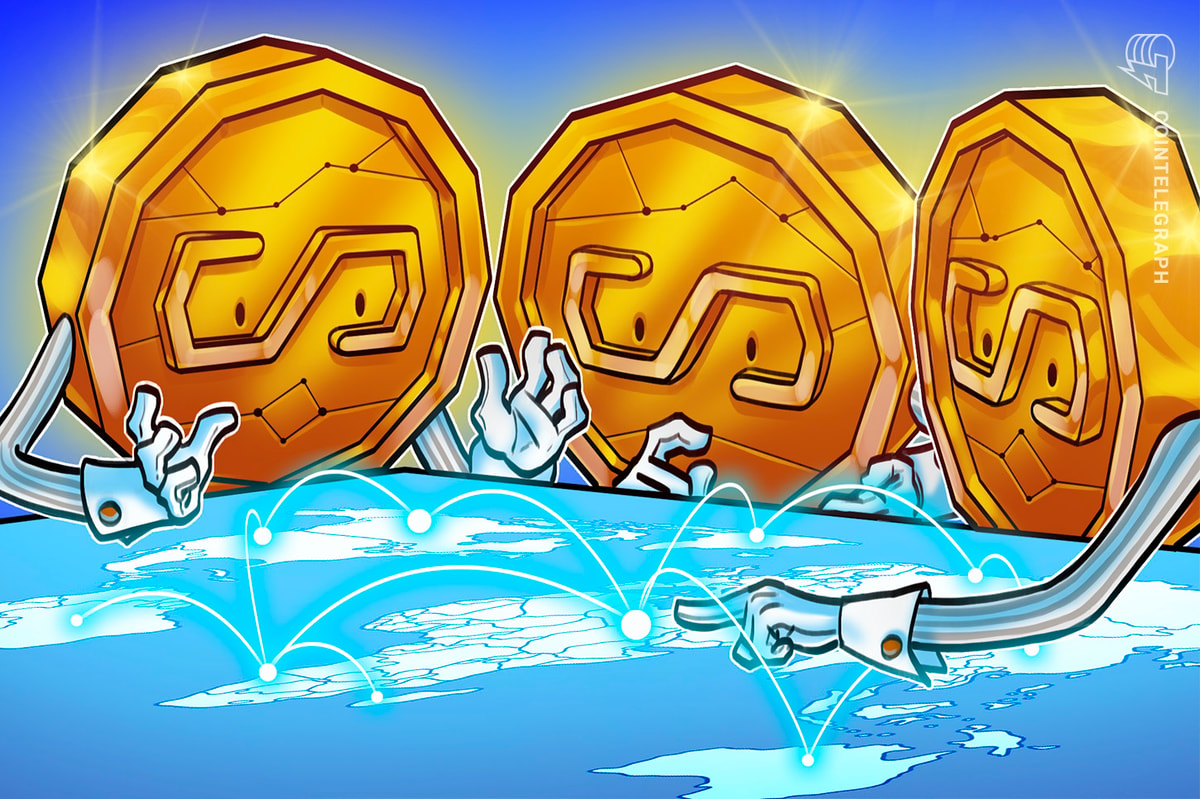
A frequently heard critique of blockchain technology is that mining is a power-intensive process that consumes energy, generates heat and damages the environment for the sole purpose of maintaining the blockchain. On one hand, maintaining an open and secure blockchain is important and, therefore, worth the energy it costs to maintain it. On the other hand, perhaps the energy spent can be partly redirected toward other important applications.
SONM (Supercomputer Organized by Network Mining) is an ambitious project that wants to turn mining computers into nodes of a worldwide supercomputer able to tackle demanding, resource-intensive computing tasks of any nature. And it is betting on the second approach.
According to the SONM white paper, “SONM is a decentralized worldwide fog supercomputer for general purpose computing from site hosting to scientific calculations.” Fog computing can be seen as a distributed form of cloud computing where computing tasks are not sent to large remote data centers but farmed to more localized networks of end-user devices.
“From a technical point of view, SONM is a top layer of underlying P2P technologies: BTSync for data transfer, Cocaine open source PaaS technology as a decentralized computing platform, and Ethereum Smart Contracts as a consensus system,” notes the white paper.
The SONM platform uses a token of the same name — SONM (ticker SNM) — on the Ethereum blockchain. An SNM presale launched on the 15th of April and was successfully completed in less than 12 hours, raising 10,000 ETH. On June 18, SONM announced that the SNM crowdsale had reached its $42 million cap, closing just four days into the sale. SNM tokens are now listed on exchanges including HitBTC and EtherDelta.
The SONM business model is based on the fact that the computing market has enjoyed double-digit growth every year for the past several years and, according to the SONM team, fog computing is more cost efficient and faster than cloud services.
SONM wants to be an aggregator, providing a P2P marketplace to connect end users to fog computing service providers. “Mining" is considered to be any computing work that fog computing service providers — or “miners” — do to execute a task. In return for their work, miners are rewarded with SONM tokens which they can use to pay for other services on the platform or cash out on exchanges. Thus, end users can save time and money using the SONM network to run their tasks and miners can lend their unused computing power and generate revenue through running tasks on their machines.
Paolo Tasca, a digital economist and blockchain expert, recently joined the SONM Advisory Board. Tasca is the Executive Director of the Centre for Blockchain Technologies at University College London, as well as a blockchain consultant to the United Nations and EU Parliament, and the co-editor of “Banking Beyond Banks and Money: A Guide to Banking Services in the Twenty-First Century.”
“We have reached the Fourth Industrial Revolution, which will fundamentally alter the way we live, work, and relate to one another,” said Tasca. “New technologies are dramatically transforming our society into something very different from what we were used to thinking about over the last few decades. The possibilities that have been unlocked by billions of people and smart devices collectively connected — with unprecedented processing power, storage capacity, and access to knowledge — are vast.”
“By 2025, most of Earth’s population, will be online and by 2030, the Internet of Things will comprise 100 billion connected devices,” continued Tasca. “Under this extraordinary wave of connectivity and digital transformation, SONM distributed cloud technology will allow processing a nearly infinite amount of data streamed from a world of sensors and connected devices that will envelop our business and private lives, changing products and habits.”
According to Tasca, while cloud computing offers several advantages such as ubiquitous on-demand or metered and self-service access to computing resources, it presents shortcomings as well including:
- limited bandwidth and service outages,
- security and privacy,
- vulnerability to attacks,
- limited control and flexibility,
- cloud computing platform dependencies, and
- comparatively higher costs.
“Fog computing, also sometimes called edge computing, aims to solve most of the cloud computing disadvantages by keeping data closer ‘to the ground,’ in local computers and devices, rather than routing everything through a central data center in the cloud,” Tasca told Bitcoin Magazine. “Fog computing allows for data to be processed more rapidly and accessed more efficiently from the most logical location, which reduces the risk of data latency.”
While cloud technologies require trusted infrastructure, centralized governance and orchestration, fog technologies work independently of centralized authority. According to Tasca, SONM fog technologies could become an integral part of the future Internet of Things (IoT), with multiple SONM nodes automatically downloading and executing tasks from the market place.
A “killer” feature of SONM is its ability to “provide IaaS [Infrastructure as a Service] for almost any current cryptocurrency startup or ICO project,” said Tasca. “We can host Ethereum miners or even full nodes, or Storj clients, or whatever. All those startups are competing for users’ computers. SONM can be a platform for all of them. From a user perspective, this gives the ability to swiftly switch between multiple projects with a click of a mouse. Install SONM and turn your computer or mining rig into a test polygon to run different apps.”
According to Tasca, there are several key features of SONM including the ability to buy and sell general purpose computing power on the open market and to make these payments with cryptocurrency. Global IaaS allows users to acquire sizeable pools of resources at will for a desired time period without obligations to renew.
At the moment, the SONM computing power marketplace supports only simple bid/ask orders but more sophisticated features are planned. “Next steps are derivative instruments, such as options and futures,” said Tasca.
It also allows for the development of truly decentralized, scalable, general purpose applications in a PaaS [Platform as a Service] environment. For miners, SONM gives them the ability to use mining equipment to accept and execute the computing tasks for which there is more demand.
SONM vs iExec
iExec (I Execute) is a distributed GRID computing platform somewhat similar to SONM. GRID computing distributes demanding High Performance Computing (HPC) applications across participating computing nodes. The Worldwide LHC Computing Grid, is a high-profile example of this sort of HPC project. It is led by CERN, the European Organization for Nuclear Research, and is dedicated to processing data produced by Large Hadron Collider (LHC) experiments at CERN.
According to Tasca, SONM’s fog computing concept is more flexible.
“The key difference is that iExec is for GRID [computing], while SONM is for general computing,” explained Tasca. “SONM can run both deterministic and non-deterministic tasks. A non-deterministic algorithm is an algorithm that exhibits different behaviors on different runs, even on the same input, as opposed to a deterministic algorithm. The non-deterministic algorithm, then, can be used to process non-deterministic tasks that need continuously different behavior patterns, like video streaming, while deterministic algorithms suit deterministic tasks that need precise scientific calculations, like bioinformatics.”
The concept of a non-deterministic algorithm could sound self-contradictory and even oxymoronic, but Tasca went on to explain how it is used in the SONM context. A deterministic task will produce the same output if it is launched on different machines, possibly at different times. If two machines running a deterministic task produce results that don't match, then one machine may be malfunctioning or its owner may be cheating.
Under the SONM paradigm, a non-deterministic task is a task wherein its definition and input is not completely defined by its owner. “It means that, while execution will take place, the task will look for or accept additional information from an outer scope. For example, if a task internally makes use of random numbers, or it is serving external requests (not defined by the task owner), then the task results may differ. If you launch such a task on two machines, the results may vary.”
For example, a web server produces results that depend on the HTTP requests received, and those requests are not part of the task definition. Similarly, a game server can use light tracing simulations driven by random numbers.
“The SONM network not only processes scientific calculations for projects like drug development, bioinformatics and aerodynamics,” concluded Tasca, “the system can also deal with non-deterministic projects, from site hosting to game servers. This latter aspect makes the SONM network a universal tool for running computing tasks of whatever difficulty.”










